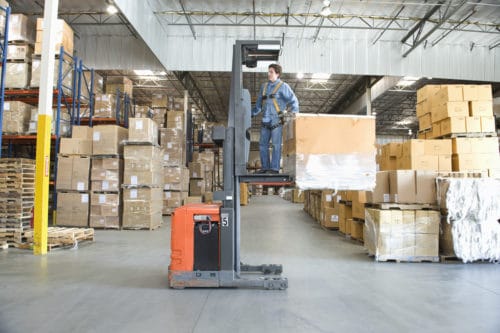Eco-Friendly Practices: Driving Change with Bulk Container Recycling
Eco-Friendly Practices: Driving Change with Bulk Container Recycling
Blog Article
Efficient Industrial Recycling Solutions for Lasting Packaging: A Comprehensive Guide
That's where this thorough overview on efficient industrial recycling solutions for lasting product packaging comes in. By discovering vital areas such as product packaging product selection, creating for recyclability, carrying out recycling framework, collaborating with recycling companions, and monitoring and measuring reusing success, this overview will certainly outfit you with the understanding and devices needed to make educated decisions and drive positive adjustment within your organization. Whether you're a packaging expert, sustainability supervisor, or simply interested in the topic, this guide will supply important insights and techniques to aid you browse the globe of lasting packaging.
Packaging Material Option
The selection of product packaging products plays a crucial function in guaranteeing the sustainability of industrial recycling solutions. The selection of products is crucial in reducing ecological effect and maximizing recycling performance when it comes to sustainable product packaging. Selecting the appropriate products can help in reducing waste generation, preserve sources, and advertise a round economic situation.
Materials like cardboard, paper, glass, and particular types of plastics can be recycled numerous times without shedding their quality. On the other hand, materials that are difficult to reuse, such as non-recyclable compounds or combined plastics, can produce challenges for the recycling procedure and may finish up in incinerators or land fills.
One more consideration is using biodegradable and eco-friendly materials. Packaging made from eco-friendly sources, such as plant-based plastics or biopolymers, can help in reducing dependency on fossil gas and reduce environment adjustment. Furthermore, eco-friendly materials damage down normally with time, decreasing the build-up of waste in garbage dumps.
In addition, the weight and volume of packaging materials should be lessened to reduce transport prices and power usage. Lightweight materials not only call for less sources throughout manufacturing however also contribute to lower carbon exhausts during transportation.
Creating for Recyclability
Packaging designers ought to focus on the use of products that are commonly accepted for reusing and have actually developed reusing infrastructures. Products such as glass, aluminum, and specific types of plastic, like Family pet and HDPE, are frequently reused and ought to be favored over products that are expensive or challenging to recycle.
Another important factor to consider in creating for recyclability is the elimination of unneeded components or materials. By lessening the variety of layers, finishings, and extra elements, packaging can be made less complex and easier to reuse. Additionally, designers must intend to minimize making use of mixed materials, as they can complicate the reusing procedure.

Implementing Recycling Framework
Effective implementation of recycling infrastructure is important for the success of commercial recycling solutions. Without appropriate framework in area, the recycling procedure ends up being ineffective and inadequate, preventing the total objective of sustainable packaging.
To execute recycling infrastructure successfully, a number of key variables need to be considered. There need to be a well-organized collection system that promotes the splitting up and collection of recyclable products. This can include designated reusing containers in public rooms, in addition to collaborations with waste management companies for curbside pickup and sorting.
As soon as gathered, the recyclable materials require to be carried to recycling facilities in a prompt manner. This calls for reliable logistics and transport networks, making certain that the products reach the appropriate facilities without hold-up.
At the reusing centers, advanced sorting and processing technologies ought to remain in area to divide various sorts of materials successfully. This consists of making use of automated arranging devices, optical scanners, and manual sorting techniques.
Furthermore, there must be a robust market demand for recycled materials. This can be accomplished through collaborations with manufacturers and markets that make use of recycled materials in their production procedures. Creating a secure market for recycled products incentivizes the recycling sector and promotes the circular economy.
Collaborating With Recycling Partners

One secret element of working together with reusing partners is the facility of clear communication networks. It is very important to establish open lines of communication to assist in the exchange of info, updates, and comments. This allows both celebrations to stay notified concerning the development of recycling initiatives and address any kind of difficulties or concerns that might emerge.
Furthermore, partnership can include collaborations in designing and implementing reusing programs. Reusing companions can provide beneficial insights and assistance in establishing reliable collection systems and figuring out one of the most suitable recycling technologies. By interacting, organizations and recycling partners can enhance the reusing procedure and lessen waste.
In addition, partnership can expand beyond the functional aspects of recycling. It can additionally include advocacy and education and learning efforts. By joining forces, services and recycling partners can increase recognition regarding the relevance of recycling and promote the adoption of sustainable product packaging methods amongst consumers and other stakeholders.
Tracking and Measuring Recycling Success
To make sure the effectiveness of industrial recycling solutions and the success of lasting product packaging objectives, it is critical for organizations and their reusing partners to establish a detailed system for tracking and determining reusing success (industrial packaging solutions). Tracking and measuring reusing success enables businesses to examine the impact of their reusing efforts, determine locations for enhancement, and set significant targets for future development
One way to track recycling success is through using information collection and evaluation devices. By collecting information on the amount of product packaging waste generated, the percentage of waste that is recycled, and the types of products being reused, organizations can get important understandings into their reusing performance. This data can after that be assessed to identify fads, patterns, and locations of ineffectiveness.
An additional important aspect of monitoring and gauging recycling success is establishing clear and standard metrics. This enables organizations to contrast their performance versus market standards look at here now and track their development over time. Metrics such as recycling prices, waste diversion prices, and greenhouse gas emissions can give a measurable step of a service's recycling success.

Conclusion
In final thought, implementing effective commercial recycling remedies for lasting packaging needs mindful consideration of product packaging product selection, designing for recyclability, executing reusing facilities, working together with reusing companions, and tracking and gauging reusing success. By integrating these practices, companies can add to a much more sustainable and environmentally-friendly technique to product packaging, decreasing waste and advertising the circular economy.
By checking out vital areas such as packaging material choice, designing for recyclability, carrying out recycling framework, teaming up with recycling companions, and monitoring and gauging reusing success, this guide will equip you with the expertise and devices necessary to make enlightened choices and drive positive change within your company. Packaging developers must prioritize the use of products that are commonly approved for recycling and have actually established reusing facilities.Collaboration with recycling partners is crucial for the successful execution of commercial reusing solutions and the achievement of sustainable packaging goals. By joining pressures, a fantastic read businesses and recycling partners can raise recognition about the importance of recycling and promote the fostering of lasting packaging practices amongst consumers and other stakeholders.
By collecting information on the quantity of product packaging waste produced, the portion of waste that is recycled, and the kinds of materials being recycled, services can acquire valuable insights into their recycling performance.
Report this page